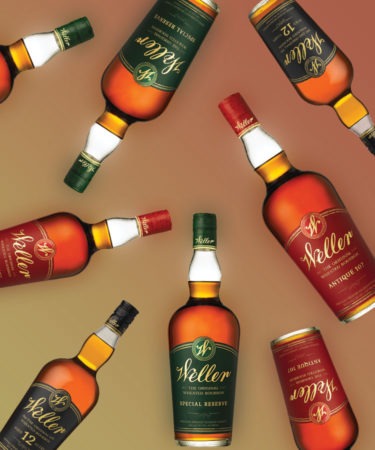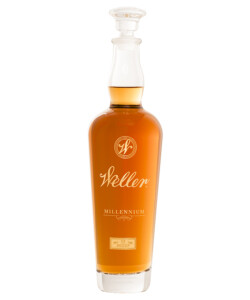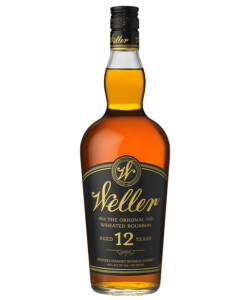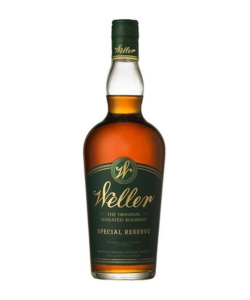Bourbon has one of the most famous recipes in the world: It must be made with at least 51 percent corn in its mash. Beyond this, bourbon distillers often use rye and malted barley to finish the grist. William Larue Weller did things a little differently.
Where many other bourbons use rye, W.L. Weller uses wheat. Weller himself developed this recipe, believing wheat produced a softer, sweeter flavor profile than rye’s typically spicy one. Though brands such as Maker’s Mark and Larceny also produce wheated bourbons, Weller’s is widely known as the pioneer of the practice.
Read on for 10 more things you should know about W.L. Weller.
-
W.L. Weller has seven signature expressions.
Weller’s original wheated bourbon, and perhaps the brand’s most notable expression, is Weller Special Reserve. Weller 12 Year is another unique offering, as it is aged far longer than most wheated bourbons, making it especially smooth. Weller’s other expressions include Weller Antique 107, and Weller Full Proof, which has a proof of 114, and is distilled without chill filtration. Also significant is William Larue Weller, the brand’s unfiltered, hand-bottled, barrel-proof expression. Finally, as of summer 2020, Weller Single Barrel is slated to be an annual release.
-
W.L. Weller 12 year and Pappy Van Winkle 12 year are basically twins.
W.L. Weller 12 Year and Pappy Van Winkle 12 Year are both made at Buffalo Trace Distillery, using the same recipe. The difference is in the aging of the barrels — which can be very slight, if even noticeable. Yet despite their almost identical recipes and flavors, W.L. Weller is easier to find, and, at about $25, it offers a better bang for your buck than Pappy, which is about $945 via Caskers.
-
Bartenders and critics agree Weller is special.
W.L. Weller Special Reserve is repeatedly praised by bartenders and spirits professionals — including VinePair staff writer Tim McKirdy, who summed up the expression as “lean and fruity, with great complexity.” The once-affordable bourbon will set buyers back about $60 these days, but when compared to its peers, it’s a steal. In fact, when VinePair asked bartenders to reveal their go-to bottles, professionals from NYC to Houston listed Weller Special Reserve among their favorites — noting its more reasonable price compared to Pappy Van Winkle, as well as its “smoother and softer finish.” Can’t beat that.
-
There was, and is, only one William Larue Weller.
There’s only one expression of wheated bourbon under Weller’s full name (the brand’s other expressions are labeled as W.L. Weller). William Larue Weller Kentucky Straight Bourbon Whiskey is uncut, unfiltered, and hand-bottled at barrel proof.
-
W.L. Weller is made in America’s oldest distillery.
The W.L. Weller brand is produced and owned by Buffalo Trace in Frankfort, Ky., which acquired the brand in 1999. The Frankfort facility is the oldest continuously operating distillery in America, and even became a National Historic Landmark in 2013.
-
Pappy Van Winkle was Weller’s first hire.
W.L. Weller hired its first salesman, Julian Van Winkle, in 1893. It was Van Winkle’s first job in whiskey. Eventually, Van Winkle purchased the A. Ph. Stitzel Distillery, which, in 1935, merged with Weller’s namesake company to form the Stitzel-Weller Distillery. The distillery became famous for both brands, and the wheated bourbons they produced. W.L. Weller and Pappy Van Winkle are now produced and owned by Buffalo Trace.
-
W.L. Weller was a neutral spirit in the Civil War.
Although two Weller brothers fought in the Civil War on the side of the Confederacy, William and Charles stayed neutral. Why? To sell whiskey, of course. Both stayed behind in Louisville selling whiskey — to both the Union and Confederacy.
-
Weller had a green thumb.
Weller was so committed to showcasing the quality of his bourbon, that he was compelled to leave his mark on every barrel to ensure its authenticity. He did so by pressing a green thumbprint on barrels to ensure that customers were receiving the real stuff. He also reportedly coined the slogan, “honest whiskey at an honest price.”
-
Like grandfather, like grandson.
W.L. Weller is named for its founder and distiller, William Larue Weller, who learned the craft from his grandfather. Keeping whiskey in the family, William Larue, a.k.a. “W.L.,” and his younger brother Charles Weller opened a trading company in Louisville, selling their own bourbon brand, William Larue Weller & Brother. (Charles got the short end of that oak stave.) In 1849, W.L. Weller replaced the rye generally found in bourbon’s mash bill with wheat. And voila: Weller’s wheated bourbon was born.
-
You can customize your own Weller expression online.
In November 2015, Buffalo Trace launched its W.L. Weller Craft Your Perfect Bourbon (C.Y.P.B.) website, an interactive experience that allows fans to learn about and create their own perfect bourbon. The process entails the choice of a bourbon recipe, placement in the warehouse for aging, number of years to age the bourbon, and final proof for bottling. The site then matches imbibers with a Weller expression that best fits their preferences.



